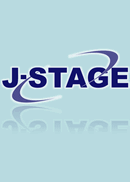All issues

Predecessor
Volume 20, Issue 10
Displaying 1-6 of 6 articles from this issue
- |<
- <
- 1
- >
- >|
-
Yoshio Kasai1982 Volume 20 Issue 10 Pages 8-17
Published: October 15, 1982
Released on J-STAGE: April 26, 2013
JOURNAL FREE ACCESSRecently, static expansive demolition agents are developed originally in Japan. These agents make progress in the field of demolition of concrete structures becouse it does not cause any flyrock, ground vibration, gas, dust or any other environmental pollution. The constitution of these agents is CaO or CaO-SiO2 or other expansive material by hydration. The powder of agent is mixed with water and a bored hole is filled by its sully. This paper deals with the following items on the demolition agents: the mechanism of expansion of these agents, the principle of prevention of gun-phenomenon, and the influence of the lapse of time, temperature, diameter of bore hole, water-expansive material ratio on the expansive pressure, and the mechanism of cracking by the static expansive demolition agent.View full abstractDownload PDF (1610K) -
Michihiko Abe, Tomoyuki Gotoh, Hiroshi Nagashima1982 Volume 20 Issue 10 Pages 15-26
Published: October 15, 1982
Released on J-STAGE: April 26, 2013
JOURNAL FREE ACCESSThis report illustrates caluculation methods for the program on a personal computer. It displays best mix when a factory of ready mixed concrete has any irregular aggregates. We propose some method such as (1) adjust of slump-loss, (2) linear function as max. size of aggregate, (3) adjust of under size gravel from common method of design of mix and questionnaires.View full abstractDownload PDF (1381K) -
Tadaaki Akai, Yoshiaki Takahashi1982 Volume 20 Issue 10 Pages 27-34
Published: October 15, 1982
Released on J-STAGE: April 26, 2013
JOURNAL FREE ACCESSConstruction work in Hokkaido is generally discontinued during the coldest period, from April to November. Nevertheless, wintertime construction work was carried out on the Poroto Bridge of Hokkaido Expressway (PC hinged rigid-frame bridge with a 130m center span). In executing the wintertime construction, a number of measures were taken and reviewing was done regarding technical design and construction problems. This construction report refers, combined with temperature measurement results, to the efforts made to prevent concrete cracks with particular attention being paid to stresses resulting from temperature concrete at construction joints. As a result, initial aims were fully accomplished, as was expected.View full abstractDownload PDF (1296K) -
-In the Case of NTT (Nippon Telegraph & Telephone Public Corp.)'s Atsugi Telecommunications Laboratory-Tomonori Konno, Sigeo Uenaka1982 Volume 20 Issue 10 Pages 35-41
Published: October 15, 1982
Released on J-STAGE: April 26, 2013
JOURNAL FREE ACCESSThe Atsugi Telecommunications Laboratory, now under construction, will aid in the research of and make practical use of VLSI (Very Large Scale Integration Circuits). It will be used to promote the development of the next generation of chips. The following new construction techniques and methods are being used in its construction: high quality concrete and superplasticizing concrete, a method of placing concrete vertical and horizontal members separately; a method of assembling the reinforcing bars prior to raising them and placing them in the forms; a X-shaped reinforcement arrangement. This paper describes the construction in detail.View full abstractDownload PDF (1313K) -
Michio Uchida, Hiroshi Tomoyasu, Koh Takai1982 Volume 20 Issue 10 Pages 42-50
Published: October 15, 1982
Released on J-STAGE: April 26, 2013
JOURNAL FREE ACCESSThis paper reports construction of Usagawa Bridge, Chugoku Expressway by use of superplasticisized concrete. The bridge is Japan's largest concrete arch with a main span of 204m which few arches exceed in the world. It is built in a manner of suspended cantilever with temporary stays and in a way of arapping up a steel girder arch with concrete. A complicated arrangement of steel girders, reinforcement and prestressing tendons make it extremely difficult to place concrete in the web of the arch rib. Increase of the water content as well as cement to improve workability will cause excessive drying shrinkage and loss of bond under steel flanges due to bleeding. To avoid this, superplasticized concrete has been adopted.View full abstractDownload PDF (1613K) -
[in Japanese]1982 Volume 20 Issue 10 Pages 75
Published: October 15, 1982
Released on J-STAGE: April 26, 2013
JOURNAL FREE ACCESSDownload PDF (165K)
- |<
- <
- 1
- >
- >|